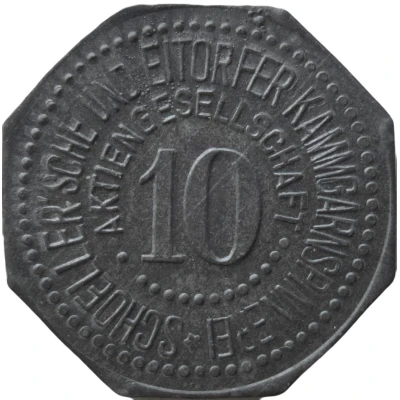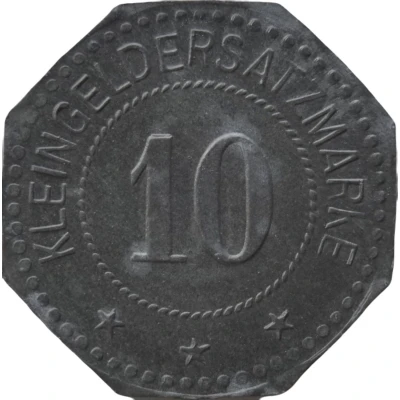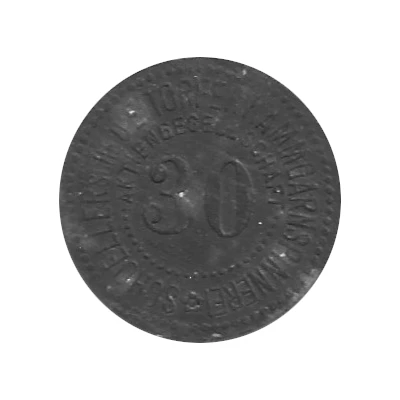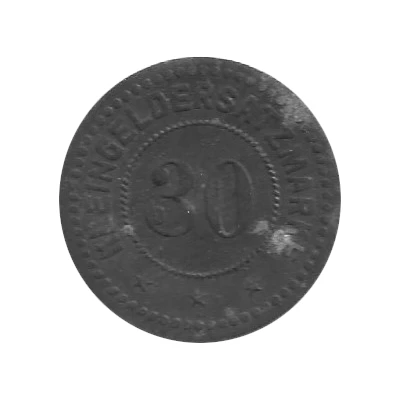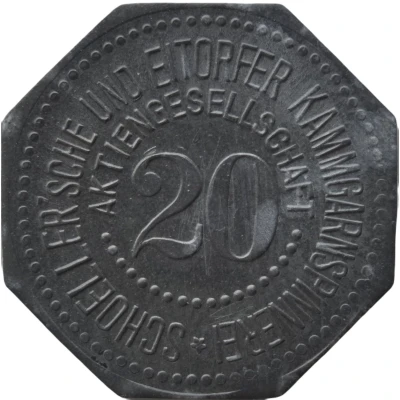
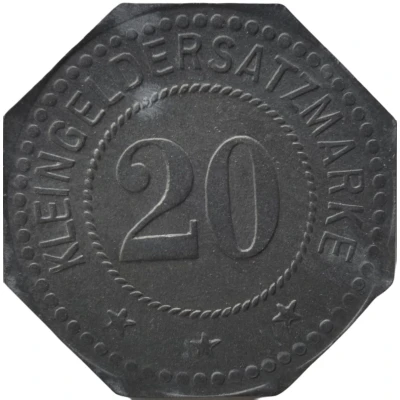

© Willem63 (CC BY-NC-SA)
20 Pfennigs - Eitorf (Schoeller'sche und Eitorfer Kammgarnspinnerei) ND
| Zinc | 2.5 g | 22.0 mm |
| Issuer | Municipality of Eitorf (Prussian province of Rhine) |
|---|---|
| Type | Standard circulation coin |
| Value | 20 Pfennigs (20 Pfennige) (0.20) |
| Currency | Mark (1914-1924) |
| Composition | Zinc |
| Weight | 2.5 g |
| Diameter | 22.0 mm |
| Thickness | 1.1 mm |
| Shape | Octagonal (8-sided) |
| Technique | Milled |
| Orientation | Medal alignment ↑↑ |
| Demonetized | Yes |
| Updated | 2024-10-04 |
| Numista | N#321053 |
|---|---|
| Rarity index | 93% |
Reverse
Pearl rim, legend surrounding rope circle with denomination centered
Script: Latin
Lettering:
KLEINGELDERSATZMARKE
20
★ ★ ★
Edge
Plain
Comment
Menzel: BBBIn 1888 the Karl Schäfer & Co. worsted yarn spinning mill was founded in Eitorf on the Gauhe family's factory premises by the Saxon industrialist Karl Schäfer. After a major fire in 1895, the company was heavily indebted. When the local works director shot himself in 1901 because of fraud proceedings, the company collapsed and was shortly afterwards transferred to the Eitorf AG worsted yarn spinning and weaving mill. The Breslau Schoeller Group then joined the company. In 1904, under Rudolf's son Arthur Schoeller (1852–1933) from Zurich and Ernst Michels from Cologne, 900 employees were again employed.
In 1908, Schoeller'sche Kammgarnspinnerei acquired the majority of the shares. Both works were combined on March 14 as Schoeller'sche und Eitorfer Kammgarnspinnerei with headquarters in Breslau.
After the Breslau plant was closed in 1925, the Eitorf plant was renamed Schoeller'sche Kammgarnspinnerei Eitorf Aktiengesellschaft.
Interesting fact
One interesting fact about this coin is that it was minted during a time of economic turmoil in Germany. The 20 Pfennigs coin was introduced in 1923 as a replacement for the Papiermark, which had become nearly worthless due to hyperinflation. The coin was made of zinc, a relatively inexpensive metal, to help control costs. Despite these efforts, the coin still saw significant inflation and was eventually replaced by the Reichsmark in 1924. This coin serves as a reminder of the economic challenges faced by Germany in the early 20th century.
